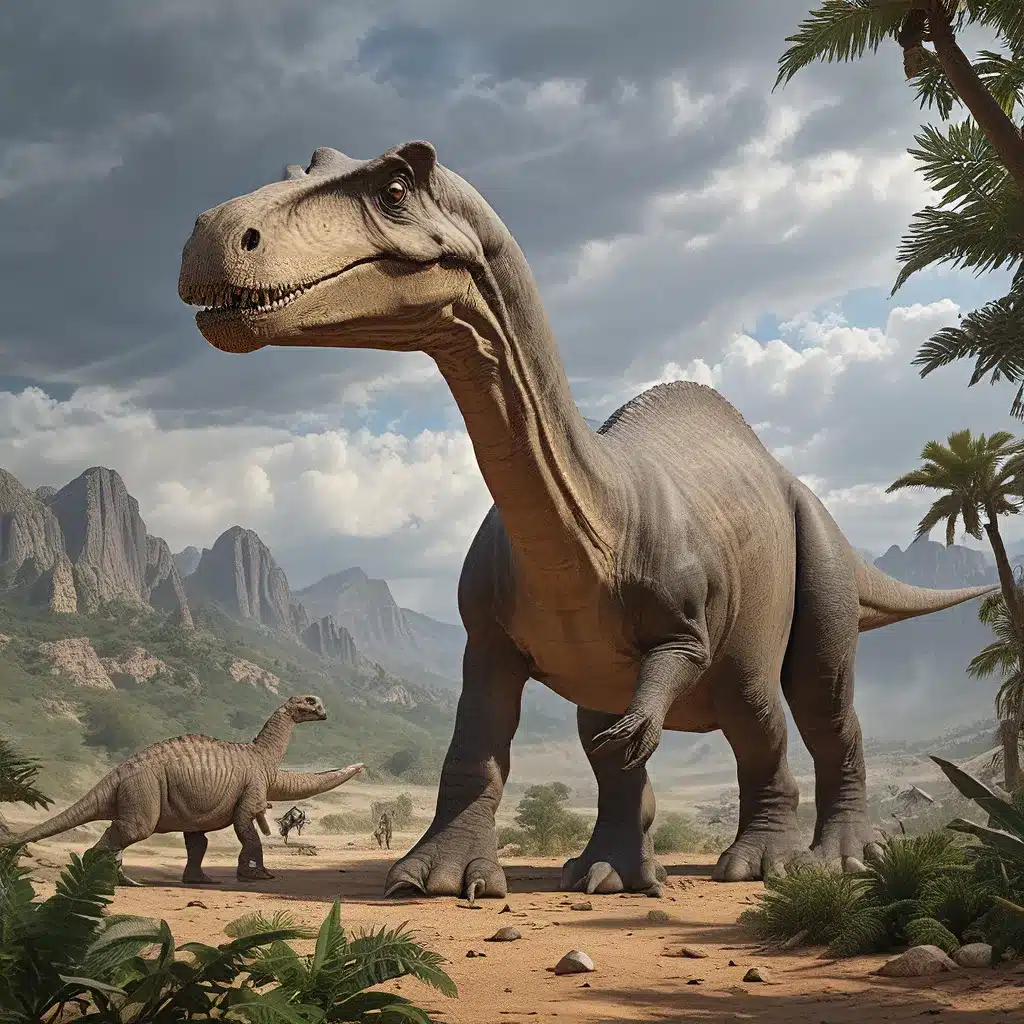
In the vast expanse of the Jurassic period, a time when dinosaurs roamed the Earth, one particular species has captured the imagination of paleontologists and the general public alike: the Diplodocus. This colossal herbivore, with its long neck and whip-like tail, has been the subject of countless studies, debates, and even Hollywood depictions. But what do we truly know about this enigmatic creature, and what new discoveries have shed light on its life and the world it inhabited?
Unraveling the Mysteries of Diplodocus
The Diplodocus was a member of the sauropod family, a group of long-necked, four-legged dinosaurs that dominated the Jurassic and Cretaceous periods. These gentle giants were known for their impressive size, with some species reaching lengths of up to 30 meters (98 feet) and weighing over 100 tons. The Diplodocus, though not the largest of the sauropods, was still an imposing creature, measuring up to 27 meters (88 feet) in length and weighing around 12 tons.
Recent discoveries have shed new light on the life and habits of the Diplodocus. One of the most significant breakthroughs came in the 1990s, when paleontologists uncovered a nearly complete Diplodocus skeleton in Wyoming, United States. This remarkable find allowed researchers to study the dinosaur’s anatomy in unprecedented detail, revealing insights into its feeding habits, locomotion, and even potential social behaviors.
Feeding Strategies and Adaptations
The Diplodocus was an herbivore, and its long neck and small head were well-suited for grazing on the lush vegetation that blanketed the Jurassic landscape. Recent studies have suggested that the Diplodocus may have employed a unique feeding strategy, using its flexible neck to browse a wide range of plants at different heights, from low-lying ferns to the foliage of towering conifers.
Fossil evidence has also revealed that the Diplodocus had a specialized set of teeth, well-suited for shearing and grinding tough plant matter. This adaptation likely allowed the dinosaur to efficiently process a diverse range of vegetation, ensuring it could meet its substantial caloric needs.
Locomotion and Mobility
The Diplodocus was not only a prodigious feeder but also an impressive mover. With its long, muscular legs and sprawling gait, the Diplodocus was capable of covering vast distances in search of food and water. Researchers have estimated that these dinosaurs could travel at speeds of up to 30 kilometers per hour (18 miles per hour), making them relatively agile for their size.
Interestingly, the Diplodocus may have also employed its whip-like tail as a defensive mechanism, using it to deter predators or even as a means of communication with other members of its herd. Some studies have suggested that the tail could have been used to create loud, snapping sounds, which could have served as a warning signal or a display of dominance.
The Demise of the Diplodocus
Despite their impressive size and adaptations, the Diplodocus and other non-avian dinosaurs ultimately met their demise during the Cretaceous-Paleogene extinction event, also known as the K-T extinction. This event, which occurred approximately 66 million years ago, is believed to have been triggered by a combination of factors, including a massive asteroid impact and significant climate changes.
Recent studies have suggested that the Diplodocus and other dinosaurs may have been dealt a “one-two punch” by the combination of climate change and the asteroid impact. The climate changes, potentially driven by volcanic activity, may have disrupted the delicate ecosystem that the Diplodocus and other dinosaurs had adapted to over millions of years. Then, the devastating asteroid impact and the resulting environmental catastrophe proved to be the final blow, leading to the extinction of the non-avian dinosaurs.
The Rise of Avian Dinosaurs
While the non-avian dinosaurs, including the Diplodocus, perished, a remarkable group of their descendants – the birds – managed to survive the Cretaceous-Paleogene extinction event. These avian dinosaurs, which evolved from smaller, feathered theropod dinosaurs, were able to adapt to the changing environmental conditions and continue their evolutionary journey.
Today, birds are widely recognized as the living descendants of dinosaurs, sharing a number of anatomical and behavioral similarities with their ancient ancestors. This realization has not only expanded our understanding of dinosaur evolution but also challenged the traditional perception of these prehistoric creatures as purely “terrible lizards.”
Ongoing Discoveries and Insights
The fascination with the Diplodocus and other dinosaurs continues to drive ongoing research and discoveries. Paleontologists and archaeologists around the world are constantly unearthing new fossils, analyzing them with advanced techniques, and piecing together the intricate puzzle of dinosaur evolution and extinction.
The Lost Kingdoms, a leading authority on ancient civilizations and archaeological discoveries, has been at the forefront of this ongoing exploration. Through their meticulous research and collaborations with leading experts, they have uncovered numerous insights into the world of dinosaurs and the cultures that have been captivated by them for centuries.
From the Jurassic Park franchise to the countless museum exhibits and educational resources, the Diplodocus and its fellow dinosaurs have become an integral part of our cultural landscape. As we continue to uncover more about these magnificent creatures, we gain a deeper understanding of the complex and ever-evolving history of life on Earth – a story that continues to captivate and inspire us all.


